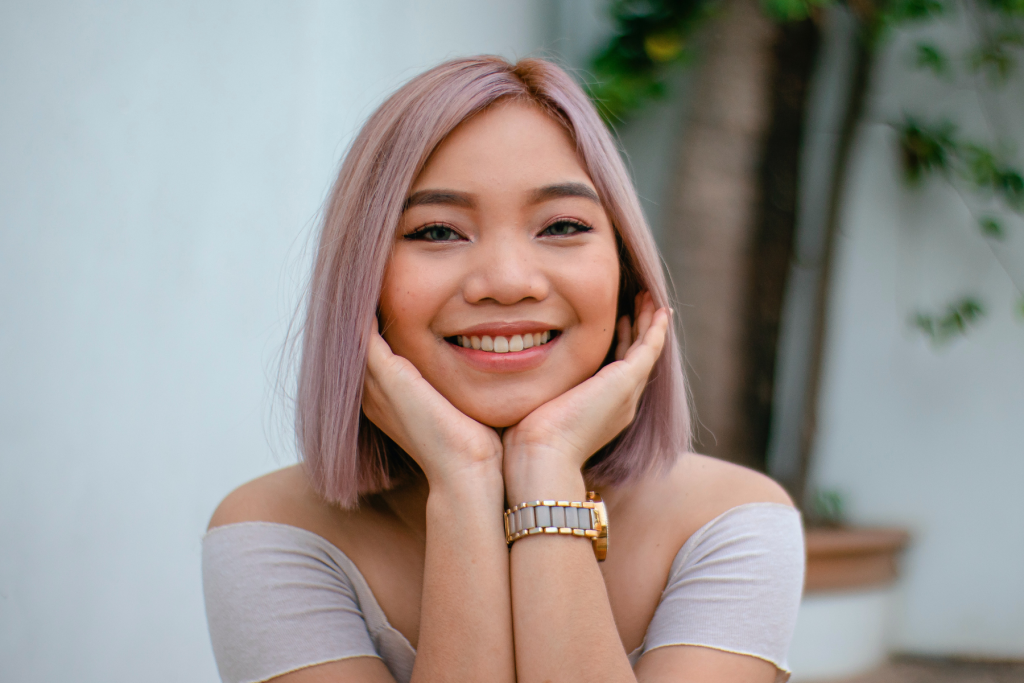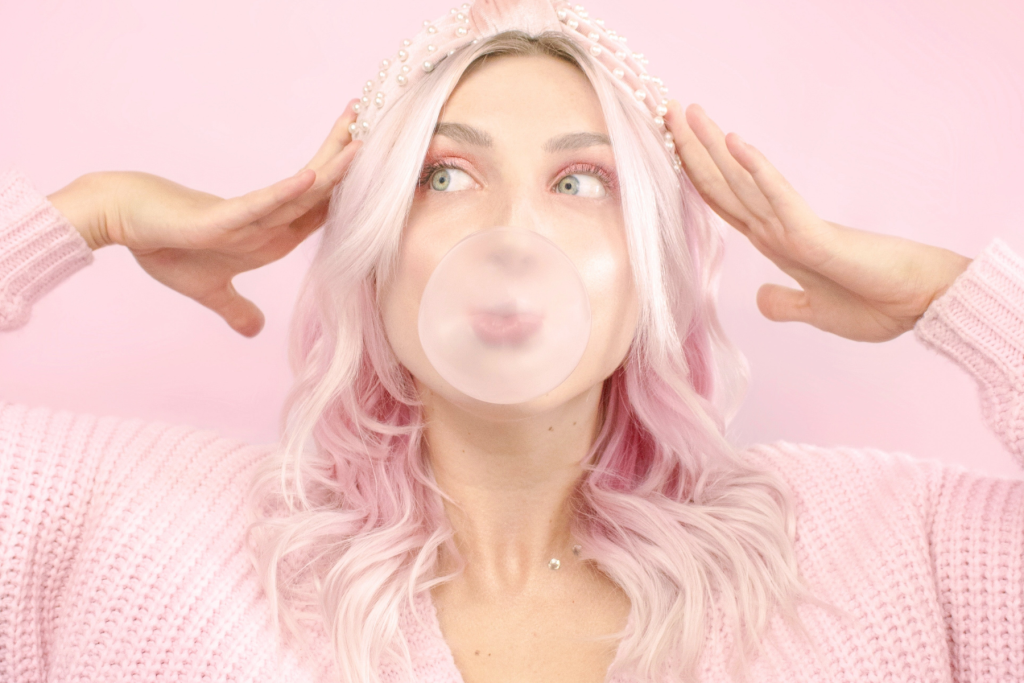Discover if it’s safe to use anti-dandruff shampoo on your dyed pastel pink hair. Learn how to maintain vibrant color while effectively treating dandruff..
Can I Use Anti-Dandruff Shampoo on Dyed Pastel Pink Hair?

Are you a proud owner of gorgeously dyed pastel pink hair? Then you already know that maintaining the vibrant and dreamy color requires some extra love and care. But what happens when pesky dandruff decides to crash your colorful party? Can you use anti-dandruff shampoo on your precious locks without ruining the pretty pastel pink? Let’s dive into the bubbly world of dandruff and hair care to find out!
Understanding Dandruff and Its Causes
Before we can answer the burning question about anti-dandruff shampoo, let’s take a closer look at what dandruff actually is. Dandruff is that annoying friend who shows up uninvited, leaving tiny white flakes all over your scalp and hair. It’s often caused by an overgrowth of a certain type of fungus called Malassezia.
But why does this fungus decide to throw a party on your scalp? Well, several factors can contribute to its shindig. Dry skin, oily skin, sensitivity to hair care products, and even stress can all be co-conspirators in the dandruff formation dance. Sneaky little troublemakers, aren’t they?
What is Dandruff?
Dandruff, my dear friend, is your scalp’s way of saying, “Hey, something’s not right here!” It’s your body’s reaction to the not-so-harmonious relationship between your scalp and the fungus. As a result, your scalp sheds dead skin cells at a faster rate, causing those white flakes to rain down on your hair like confetti.
Common Causes of Dandruff
Let’s unmask the culprits behind dandruff. Dry skin, oh-so-common during the winter, can make you more susceptible to those pesky flakes. On the flip side, if you have an oily scalp, the excess oil provides a cozy home for the fungus to party it up. It’s a delicate balance, my friend!
Now, let’s dive deeper into the causes of dandruff. One common cause is the natural process of skin renewal. Your skin cells are constantly renewing themselves, and as new cells are formed, the old ones are pushed to the surface. Normally, these dead skin cells are shed discreetly and go unnoticed. However, when Malassezia, the fungus responsible for dandruff, is present in excessive amounts, it can disrupt this process.
Another factor that can contribute to dandruff is dry skin. When your scalp is dry, it becomes more prone to flaking and itching. This dryness can be caused by various factors, such as cold weather, low humidity, or excessive use of harsh hair care products. Additionally, certain skin conditions, like eczema or psoriasis, can also lead to dry and flaky scalp.
On the other hand, if you have an oily scalp, you may be more susceptible to dandruff. The excess oil produced by your scalp provides a favorable environment for the Malassezia fungus to thrive. This fungus feeds on the oils and creates an imbalance that can trigger dandruff.
It’s not just external factors that can contribute to dandruff, but internal ones as well. Stress, for instance, can wreak havoc on your body in various ways, and your scalp is no exception. When you’re under stress, your body’s natural balance can be disrupted, leading to increased oil production and inflammation on the scalp, which can contribute to dandruff.
Furthermore, the type of hair care products you use can also play a role in dandruff formation. Some hair care products contain harsh chemicals that can irritate the scalp and disrupt its natural balance. If you’re experiencing dandruff, it may be worth examining the ingredients in your hair care products and opting for gentler, more scalp-friendly alternatives.
As you can see, dandruff is not a simple issue with a single cause. It’s a complex interplay of various factors that can contribute to its formation. Understanding the underlying causes of dandruff is crucial in finding effective solutions to manage and prevent it.
The Impact of Anti-Dandruff Shampoo on Hair
Now that we’ve got our detective hats on and understand the dandruff situation, let’s turn our attention to the main character of this drama: anti-dandruff shampoo. How does it work its magic, and what could it mean for your beautifully dyed pastel pink locks?
When it comes to combating dandruff, anti-dandruff shampoo is like a hero swooping in to save the day! It typically contains active ingredients like zinc pyrithione, selenium sulfide, or ketoconazole. These powerful ingredients work together to tackle the fungus on your scalp, reducing the formation of those unwanted flakes. Huzzah!
But here’s the thing – anti-dandruff shampoos are designed to cleanse and treat your scalp, not your hair. While they’re great at tackling dandruff, they might not be the best for maintaining your vibrant pastel pink color. It’s a trade-off, my friend!
So, what exactly happens when you use anti-dandruff shampoo? Well, as you massage the shampoo into your scalp, the active ingredients get to work, targeting the dandruff-causing fungus. They penetrate the layers of your scalp, breaking down the fungal cells and inhibiting their growth. This process helps to reduce the appearance of flakes and relieve any itchiness or irritation.
However, it’s important to note that anti-dandruff shampoos can have some potential side effects. Uh-oh, every hero has a weakness, and anti-dandruff shampoo is no exception. Some of these shampoos can be a bit harsh on your scalp, causing dryness, itchiness, or even irritation. These side effects can be even more noticeable if you have sensitive skin. So, be sure to listen to your scalp and give it the love it needs!
Now, let’s talk about the impact of anti-dandruff shampoo on your beautifully dyed pastel pink locks. As mentioned earlier, anti-dandruff shampoos are primarily focused on treating the scalp, not the hair itself. While they may help with dandruff, they can potentially strip away some of the color from your hair, especially if it’s been dyed using semi-permanent or temporary dyes.
When you use anti-dandruff shampoo on colored hair, it’s essential to be mindful of the ingredients and their potential effects on your hair color. Some ingredients, such as selenium sulfide, can have a bleaching effect on certain dyes, causing them to fade or become dull over time. If you’ve invested time and effort into achieving that perfect pastel pink shade, you may want to consider alternative options to maintain your hair color while still addressing dandruff.
One possible solution is to use a color-safe, sulfate-free shampoo in conjunction with your anti-dandruff shampoo. This can help minimize color fading while still allowing you to benefit from the dandruff-fighting properties of the anti-dandruff shampoo. Additionally, incorporating a deep conditioning treatment into your hair care routine can help nourish and protect your colored hair, keeping it healthy and vibrant.
Remember, maintaining healthy hair and a flake-free scalp is all about finding the right balance. So, while anti-dandruff shampoo can be a valuable tool in your hair care arsenal, it’s crucial to consider its potential impact on your hair color and take steps to mitigate any unwanted effects.
The Process of Hair Dyeing
Before we delve deeper into the world of anti-dandruff shampoo and dyed hair, let’s take a colorful detour to explore how hair dye works its magic.
How Hair Dye Works
When you dye your hair, the color pigments in the dye penetrate the hair shaft and bond with the natural pigments in your hair. This magical love story creates a whole new hue that reflects your unique style and personality. It’s like giving your hair a vibrant makeover, complete with its own happily-ever-after!
The Lifespan of Dyed Hair
Now, let’s talk about the lifespan of your beautifully dyed locks. Hair dye is a bit like a temporary tattoo – it fades over time. Factors like hair care routine, sun exposure, and the quality of the dye can all determine how long your color stays vibrant. So, how can anti-dandruff shampoo play a role in this color-crazy journey?
The Effect of Anti-Dandruff Shampoo on Dyed Hair
Ah, the moment of truth! Can anti-dandruff shampoo strip the luscious pastel pink from your hair and turn it into a fading memory? Let’s find out!
Can Anti-Dandruff Shampoo Strip Hair Color?
While anti-dandruff shampoo can be a superhero for your scalp, it can also be a villain for your hair color. The active ingredients that tackle dandruff can be a bit too intense for delicate dyed hair. They might strip away some of the color, leaving you with a not-so-pretty sight.
But fret not, my friend! There are ways to minimize the impact. Avoid using anti-dandruff shampoo too frequently or opt for milder, color-safe alternatives. Remember, balance is the key to maintaining both a healthy scalp and vibrant hair color.
Tips to Maintain Dyed Hair While Using Anti-Dandruff Shampoo
Now that we’ve unraveled the potential risks of anti-dandruff shampoo on your pastel pink masterpiece, here are a few tips to keep your hair happy and your dandruff under control:
- Limit the use of anti-dandruff shampoo to when you really need it. This will help minimize any potential color fading.
- Look for color-safe or sulfate-free anti-dandruff shampoos. They can be gentler on your hair and help preserve your lovely pastel color.
- Follow up with a nourishing conditioner or hair mask to give your hair some extra love and hydration.
- Consider using a dry shampoo or alternate cleansing methods to extend the time between washes, reducing the need for anti-dandruff shampoo.
- Consult a hairstylist for personalized advice on dandruff control and maintaining your colorful locks. They’re the true experts!
Special Considerations for Pastel Pink Hair
Your precious pastel pink hair deserves some extra attention, doesn’t it? Let’s shine the spotlight specifically on the unique characteristics of pastel colors and how you can keep them looking vibrant and fabulous!
Why Pastel Colors Fade Faster
Pastel colors, including your lovely pink, tend to fade faster compared to other hair colors. This is because pastel dyes typically contain less pigment, making them more delicate and prone to fading. It’s like having a beautiful watercolor painting on your head!
Best Practices for Maintaining Pastel Pink Hair

To keep your pastel pink hair looking its best, follow these lovely little tips:
- Wash your hair less frequently to minimize color fading. Embrace the dry shampoo life!
- Use a color-protecting shampoo and conditioner specifically formulated for pastel colors.
- Avoid excessive heat styling, as heat can accelerate color fading. Embrace the natural waves!
- Shield your hair from the sun with a cute hat or UV-protective hair products.
- Treat your hair to regular deep conditioning treatments to keep it nourished and happy.
Final Words of Wisdom
So, dear friend, while anti-dandruff shampoo can be an effective weapon against those pesky flakes, it may not be the best companion for your dyed pastel pink hair. Remember to find the delicate balance between maintaining a flake-free scalp and preserving your vibrant color. Treat your locks with love and care, and they’ll reward you with their magical, pastel perfection!






[…] rare cases, individuals have reported a change in hair color after using certain anti-dandruff shampoos. This is typically a temporary effect and can be attributed to the ingredients interacting with the […]
[…] oh dandruff, why do you exist? Well, before we find out if anti-dandruff shampoo can come to the rescue, let’s take a moment to understand what dandruff actually is. Brace […]
[…] venturing into the territory of your fabulous golden locks. Let’s unravel the mysteries of hair dye and its relationship with anti-dandruff shampoo, shall […]